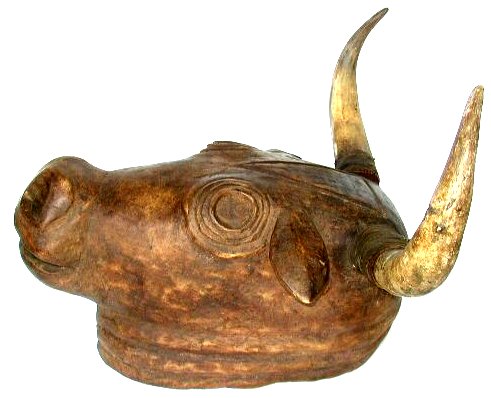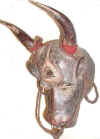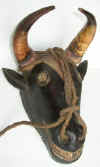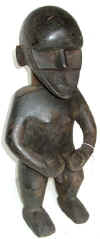 |
 |
 |
 |
TRIBAL AFRICAN ART
BIJAGO (ANAKI, BIDJOGO, BIDYOGO, BIJOGO, BIJUGO,
BISSAGO)
Guinea-Bissau
Off the
shore of Guinea Bissau lie about thirty islands that comprise the Bijago archipelago. The
Bijago are known from early chroniclers' accounts for their daring raids on shipping along
the African coast using huge canoes. The economy of the archipelago is based on the
cultivation of rice, on palm oil, and on fishing. The society is highly structured by
means of institutions such as matrilinear clans, the council of elders, age classes, and
the priestess. Age groups cover about seven levels among the males from infancy to old
age. Martial virtues were cultivated by an age-set system that associated young men with
powerful beasts of the sea and land. The Bijago society continues to practice its many
religious rituals. Among these, male initiations, which today may not exceed two months,
but formerly ran over several years, and the women’s, which characteristically
consist of offering access to adult status for boys who have died before being initiated.
This is a recuperative initiation, performed by women who are possessed by the spirit of
the deceased. The matriarchal order was so strong that the women selected their men and
could force divorce on their husbands, the man keeping the children.
The
sculptor is a voluntarily engaged artisan who, through his periodic activity in connection
with ceremonies of initiation and worship, is familiar with numerous secrets. Each
villager may sculpt initiation masks, head decorations, statuettes, vessels, and so on.
The heaviest masks are worn by the age group that is not yet considered adult. These
represent, in a realistic manner, marine animals or wild bulls. While young boys might
wear calf and fish masks, older uninitiated youths wear those depicting wild bulls,
sharks, hippopotami and swordfish. Their dances are unpredictable and violent to accord
with the character of the animal represented and their own undomesticated nature. The
masks are worn either on top of the head or in front of it. The dancers imitate these
dangerous animals that symbolize beings that are still untamed, as they have not been
initiated. The masks are danced by boys and young men during the ceremonies that precede
and follow the phases of initiation. Besides ritual occasions, nowadays they also appear
in secular contexts, on days that commemorate historical events, and when important people
visit.